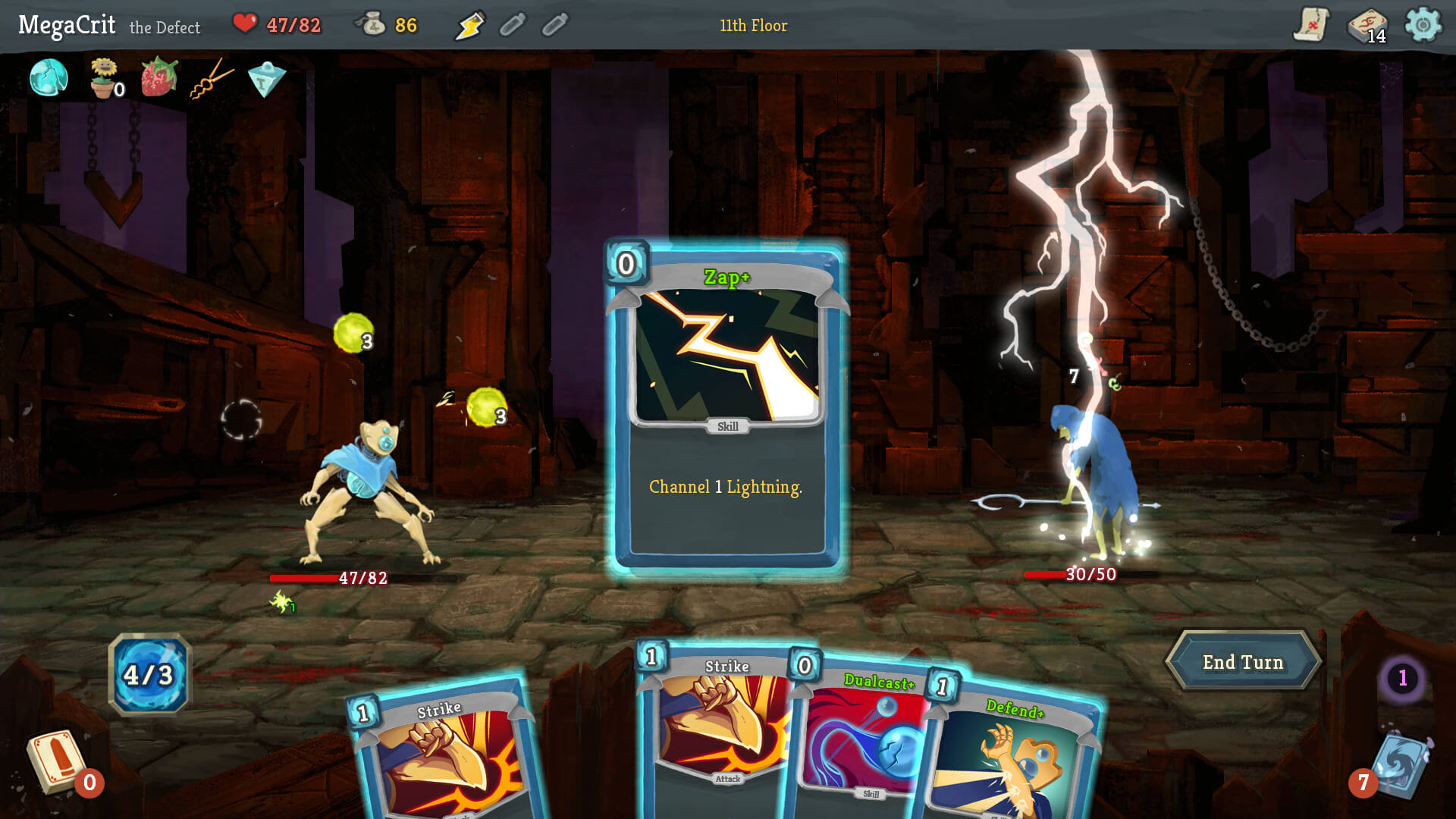[PC Game] Slay the Spire
Slay the Spire is a roguelike video game developed by American studio MegaCrit and published by Humble Bundle. The game was first released in early access for Microsoft Windows, macOS, and Linux in late 2017, with an official release in January 2019. It was released for PlayStation 4 in May 2019, for Nintendo Switch in June 2019 and for Xbox One in August 2019. An iOS version was released in June 2020, with an Android version released in February 2021.
In Slay the Spire, the player, through one of four characters, attempts to ascend a spire of multiple floors, created through procedural generation, battling through enemies and bosses. Combat takes place through a collectible card game-based system, with the player gaining new cards as rewards from combat and other means, requiring the player to use strategies of deck-building games to construct an effective deck to complete the climb.
Slay the Spire has been well-received. It was nominated for several accolades in 2019, and is considered the game that launched a number of roguelike deck-building games.

Slay the Spire is a combination of roguelike-inspired progression and the gameplay of a deck-building card game. At the start of a playthrough the player selects one of four predetermined characters, which sets a starting amount of health, gold, a starting relic that provides a unique ability for that character, and an initial deck of cards with basic attack and defense cards as well what potential color-coded cards tailored to that character they will see through the run. The goal is to work through several levels of a spire, each level having a number of potential encounters distributed in a branching structure with a boss character at the end of the level. Encounters include monsters which vary in strength; elite enemies which offer enhanced rewards; campfires to heal or upgrade cards to more powerful versions; shopkeepers to buy cards, relics and potions from, as well as to remove cards from the deck; chests with random loot; and random choice-based encounters.
Combat is played in turns. Each turn the player receives a fresh hand of cards and three energy points. The player can play any combination of cards as long as they have the energy to pay for the energy cost of each card, and at the end of the turn, all cards not played are sent to a discard pile. Players’ cards vary by the character but generally consist of attack cards to damage opponents, skill cards that buff themselves, debuff opponents, or add to their blocking power for the turn, and power cards where the effect remains in play until the end of combat. Each opponent on the field will telegraph what move they will make: if they will attack and with how much damage, if they will block, cast a spell to buff themselves or debuff the player. In some cases, the opponents’ attack or the player cards may add unplayable cards representing battle conditions like Wounds and Curses to the player’s deck that can dilute a player’s hand and may add negative effects while in the player’s hand. The player can determine the best strategy to avoid taking any damage after they complete their turn. If the player’s health drops to zero, the game is over and they must restart from the bottom of the spire. Otherwise, if the player defeats all the monsters in an encounter, they typically receive gold and a choice of one of three randomly-selected cards to add to their deck, if desired. Other loot that can be obtained from monsters or other encounters include relics that provide a permanent character buff for the duration of the game, such as increased maximum health, additional energy points, lower casting costs, and automatic blocking, and single-use potions that can be used during any turn for no cost to restore health, buff the player, and debuff or damage the enemy.
The deck-building game requires players to develop a strategy for their deck on the fly based on the cards they can obtain from loot and in synergy with the relics they obtain. Like other deck-building, too many weak cards or the unplayable cards dilute the player’s deck, and the player must strategically decide which cards are the best fit to make the deck effective, when to turn down additions of cards, or when to spend money to remove cards as to maximize the deck’s strength.
Slay the Spire features metagaming aspects. Completed or failed runs contribute points towards unlocking new characters or new relics and cards that will be made available for the specific character. Up to 20 Ascension difficulty levels unlock with each successfully completed run, each adding a cumulative negative effect such as lower health or stronger enemy attacks. Achievements provide several challenges to the player such as to climb the tower with a character using only their starting relic or with only common cards in their decks. A daily challenge gives players a single chance to get as high in the spire as they can under pre-set conditions and a fixed random seed, so that each player is starting from the same point and sees the same encounters.
DOWNLOAD: Slay the Spire
BACKUP LINK: Slay the Spire









